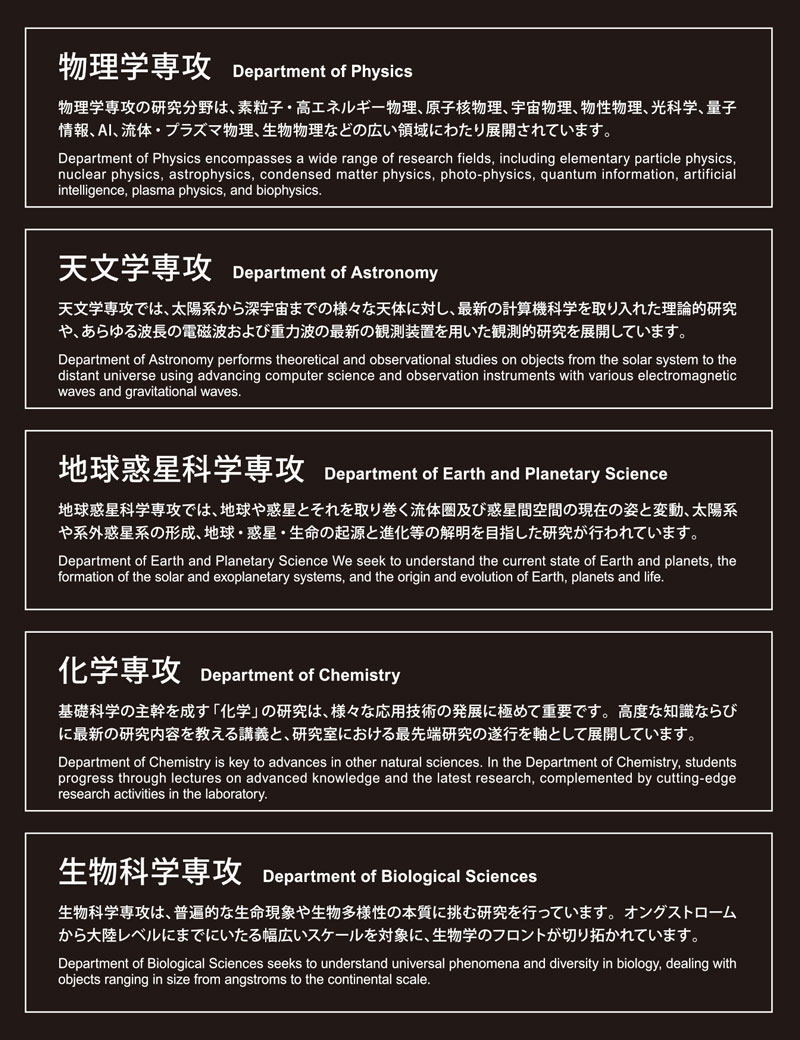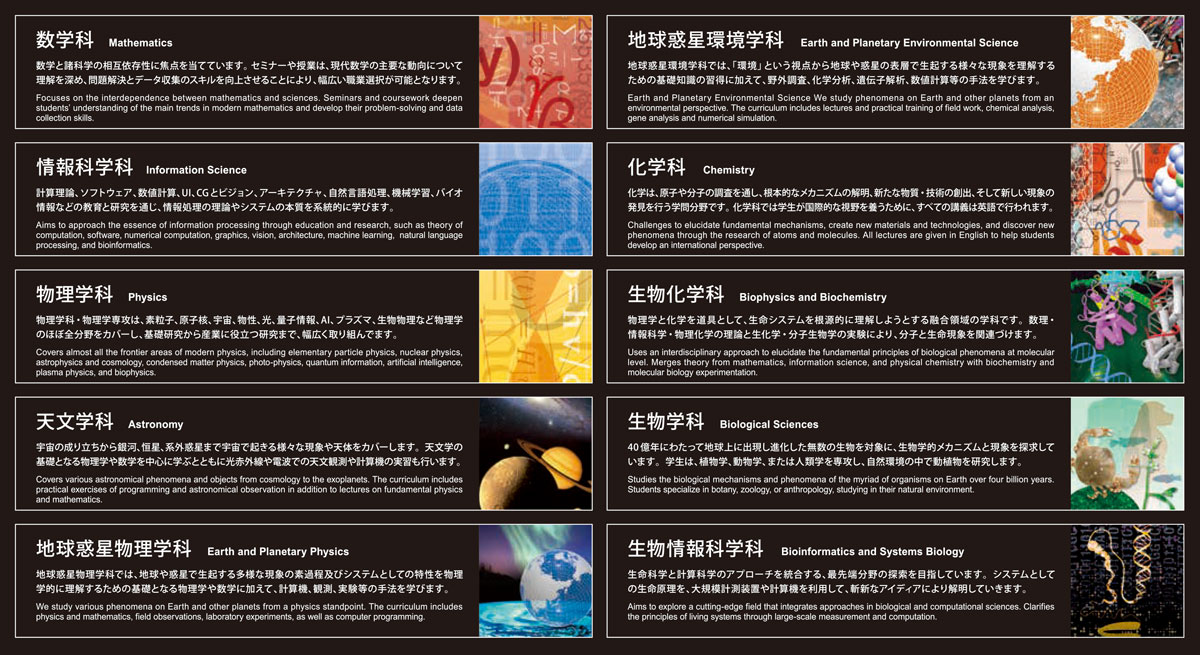Approaching the Essence of Nature and Pioneering the Frontier of Human Knowledge
The Science Gallery of School of Science was renovated in July 2022 by UTokyo Ushioda Fund and established for the purpose of information dissemination and exchange with society at large. The gallery features exhibits related to Nobel Prize-winning research by our graduates, an overview of School of Science and its history, as well as exhibits and videos on our cutting-edge scientific research. We welcome you to explore our gallery and experience the wonder of science.
History of School of Science, the University of Tokyo
The Origins of Science in Japan
The University of Tokyo was founded in 1877 during the era known as the Meiji Restoration. The School of Science was inaugurated in the same year, but its origins can be traced back nearly 200 years earlier. In 1684, during the Edo period, the Tokugawa Shogunate government established the Tenmonkata (Astronomy Agency), charged with the responsibility of compiling the calendar, and its accumulated knowledge and techniques for astronomical observation were passed on to the body that would become the School of Science. Later, the government also created the Koishikawa Medicinal Herb Garden, which became affiliated with the School of Science on its inauguration, and is known today as the Koishikawa Botanical Garden, and the Seirenkata (Department of Refining) within the Bansho Shirabesho (Institute for the Study of Barbarian Books), which later became the parent body of the Department of Chemistry.
Like the Koishikawa Botanical Garden, the Misaki Marine Biological Station is another affiliated historic facility from the Meiji era. The Station was built in 1886 at the suggestion of Dr. Edward Morse, who laid the foundations for the study of anthropology and archaeology in Japan.
Pioneering New Academic Fields to Meet Emerging Demands
On its foundation, the School of Science consisted of five departments: Mathematics, Physics and Astrology; Geology and Mining; Chemistry; Biology; and Engineering. The Department of Mathematics, Physics and Astrology was eventually divided into distinct Departments of Mathematics, Physics, and Astronomy, and the Department of Geology and Mining later became the Department of Geology, and is now known as the Department of Earth and Planetary Environmental Science. The Department of Engineering was later separated completely from the School of Science and became the parent body of the School of Engineering. After the Great Kanto Earthquake of 1923, the Department of Seismology was established in the same year. In 1941, it was renamed the Department of Geophysics, and is now the Department of Earth and Planetary Physics. In response to rapid advances in the field of molecular biology in the 1940s, particularly in the United States, the Department of Biophysics and Biochemistry was established in 1958, becoming the first university department in Japan to specialize in molecular biology.
In 1975, the Department of Information Science was established to foster research and education in the field of information science. In the 2000s, the School of Science established an educational program on bioinformatics, a field of study that views life as information, and in 2007 extended this program to become the Department of Bioinformatics and Systems Biology.
The Graduate School of Science now comprises five departments: Physics, Astronomy, Earth and Planetary Science, Chemistry, and Biological Sciences. It also includes affiliated facilities such as centers for exploring more specialized fields and research institutes that promote interdisciplinary research, and the School is committed to developing science graduates whose talents are needed in the wider community.

